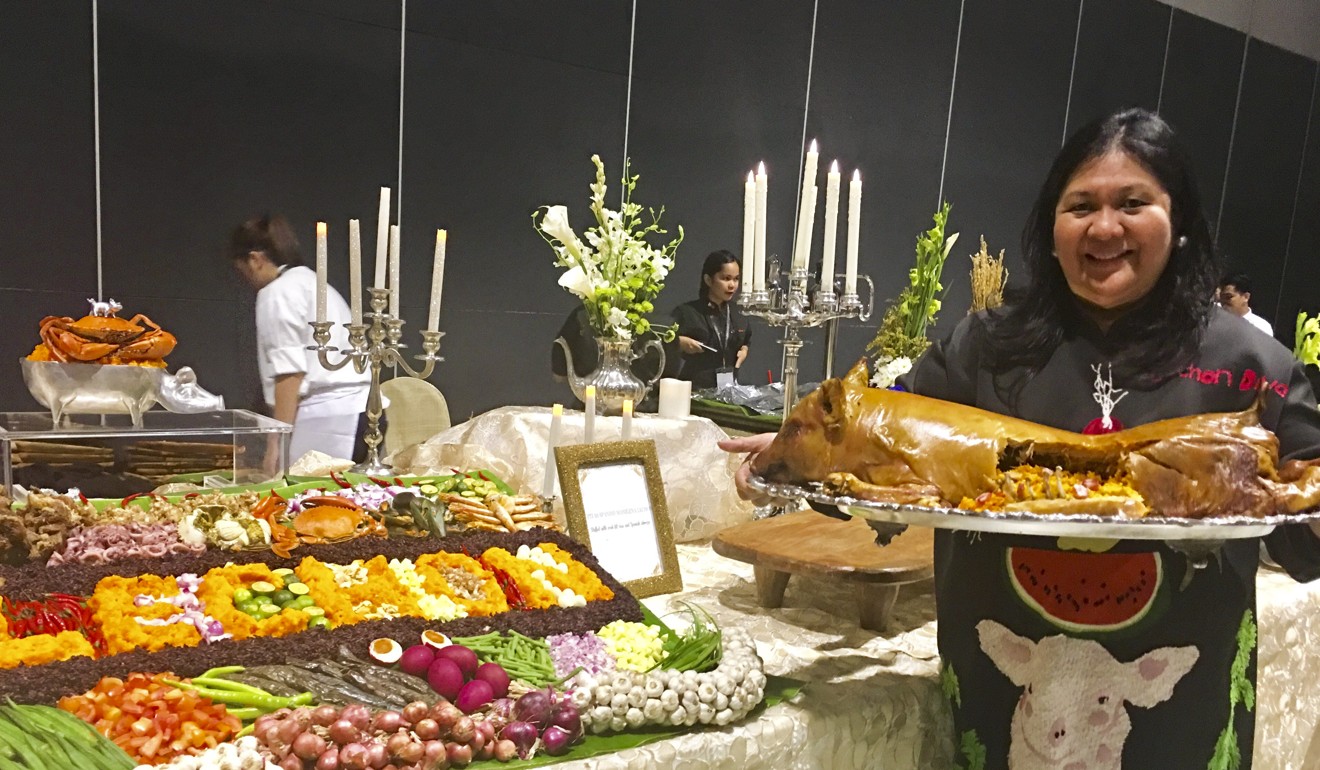
The secrets to great lechon - whole roasted suckling pig that’s virtually a Filipino national dish
Originally a Spanish delicacy, dish has been wholeheartedly adopted and adapted by the Philippines, and each part of the country has its own version prepared with local ingredients
In the last few years, there has been talk internationally of Filipino cuisine becoming the next big thing. While Jollibee fried chicken is probably the most famous export, many would consider the country’s national dish to be lechon, or roast stuffed pig, which has crunchy skin and meat that is tender and flavoured from the stuffing.
At the third annual Madrid Fusion Manila fair earlier this year, one of the themed lunches during the three-day event was nose-to-tail dining, and for Filipinos the best way to demonstrate this is through lechon.

“Each province has its own way of making it,” explains Happy Ongpauco-Tiu, whose family runs a chain called Barrio Fiesta, as well as several other restaurants that serve versions of lechon along with other traditional Filipino dishes.
She stresses it’s best to use a piglet that’s about three months old to ensure the meat is very tender. The traditional way of making lechon is to marinate the pig with salt, pepper and fish sauce for a few daysbefore stuffing it with herbs that are pounded to bring out the aromas and flavours. The pig is then slow roasted for three to four hours, traditionally over an open fire with charcoal, or in a brick oven.
The regional ingredients used are what makes lechon taste different in the various parts of the country. “For example, in Cebu they use ingredients like lemongrass and pili nuts, while in Bicol it’s green chillies and infused with coconut oil and milk,” says Ongpauco-Tiu.
“My dad [Rod Ongpauco] invented the crispy pata [deep-fried pork legs] when he was 15 years old. His mom had a restaurant that served lechon, and they would throw away the legs. He took the legs and marinated them in sea salt and fish sauce and then deep fried them,” she says. They became such a hit in his mother’s restaurant that Ongpauco struck out on his own two years later and 60 years ago, opened Barrio Fiesta, which eventually became a chain of restaurants.

Originally she made the dish for family and friends. Once she mastered the traditional way of making lechon after learning the technique at a cooking class, she began experimenting and created many different stuffings.
“I now have 20 different stuffings, inspired by what I like to eat,” she says with a hearty laugh, during a presentation of her lechon at the Madrid Fusion Manila lunch.
Three of her signature stuffings are truffle rice inspired from France, Spanish-style chorizo and crab fat paella, and the Chinese-inspired sticky rice, chestnuts, salted eggs, peanuts, Chinese sausage and pork cubes.
Dela Fuente-Santos uses a brick oven to ensure the heat is evenly distributed and consistent. The result is shiny crackling, and when the knife cuts into itthe stuffing practically spills out. It’s so tender that only a fork or spoon is needed to eat it.
Diners can sample dela Fuente-Santos’ lechon at her home, where she presents it as part of an eight or 12-course degustation menu that includes appetisers, desserts and even creative cocktails, or she can prepare the lechon for private parties, much like roast pig in Hong Kong for special events.

“The things you can stuff lechon with are endless,” she says. “I’ve done it with lemongrass, tamarind leaves, and liver purée with vinegar as a sauce.” Fores gives other examples. In Cebu, which is famous for its lechon,the pig is stuffed with garlic and seasoned heavily with herbs and spices.
“In Negros, my home province, we use batuan, a green sour-tasting fruit [a relative of the mangosteen], combined with tamarind and lemongrass,” Fores says.

“Some infuse it with a beer bottle using a dark San Miguel,” continues Fores. “They poke a hole in the bottle cap so that when the pressure builds from the heat in the oven or fire, the beer sprays into the pig, adding flavour and keeping the meat moist. The outside skin also puffs up so it’s crispier.”
As the chef/owner of such dining establishments as Cibo, Lusso and Grace Park, Fores serves lechon as the centrepiece of any festive meal. And if there’s too much lechon, the leftovers won’t go to waste.
Fores says, “You can take different parts of the pig and make different dishes with it. For example you can use the pig head and innards to make sisig, where the ingredients are chopped up and then boiled, grilled and fried. You can also deep-fry the leftovers, and use the pork bones to put in a soup. This became popular in the 1960s and ’70s when there was a desire not to waste things.”
Jordy Navarra, chef and owner of Toyo Eatery in Manila, who did a brief stint at Michelin three-starred Bo Innovation in Hong Kong, says it’s best to make lechon the traditional way, without short cuts.
“Some stuff the pig with lemongrass, batuan, garlic, and sea salt to control the saltiness and make it more natural, but adding MSG [monosodium glutamate] is what gives it umami flavour,” he says.
While adding chicken seasoning powder – another form of MSG – is like a quick and easy “magic syrup”, Navarra says it’s not healthy to use this instant flavour enhancer and Filipinos need to realise it tastes better using natural herbs and spices.

